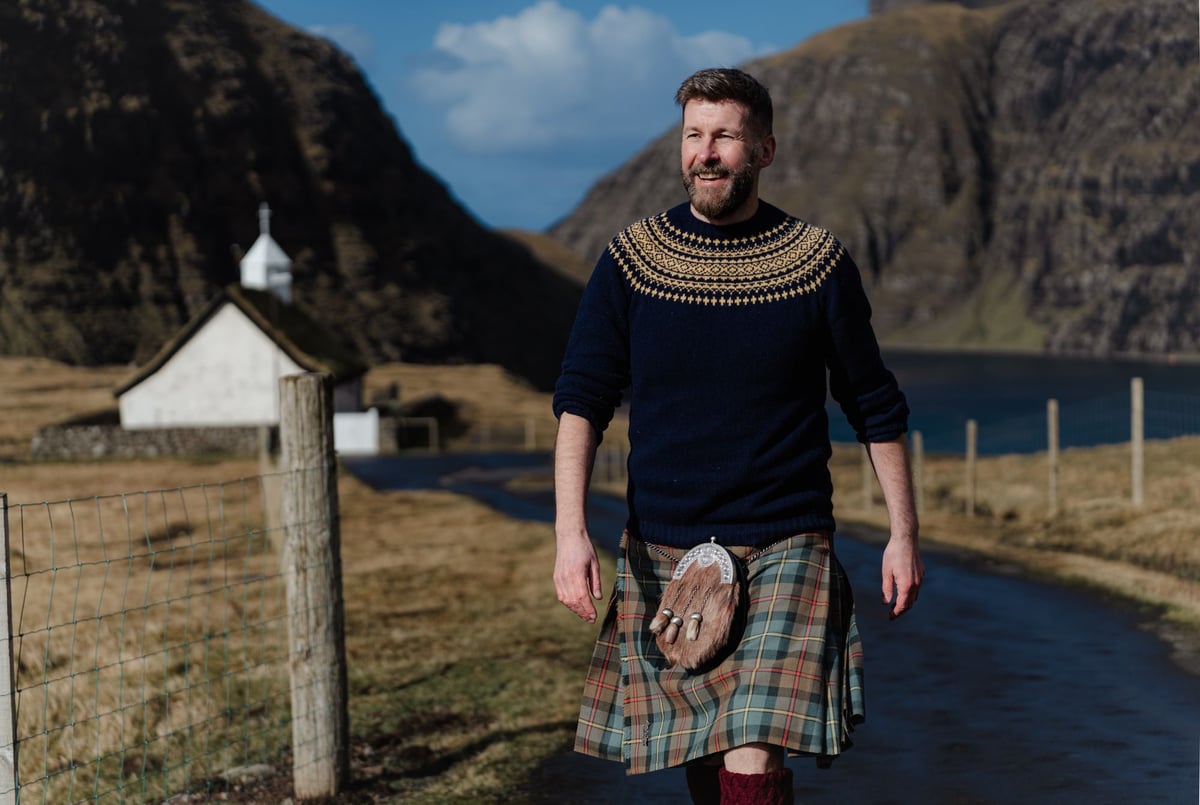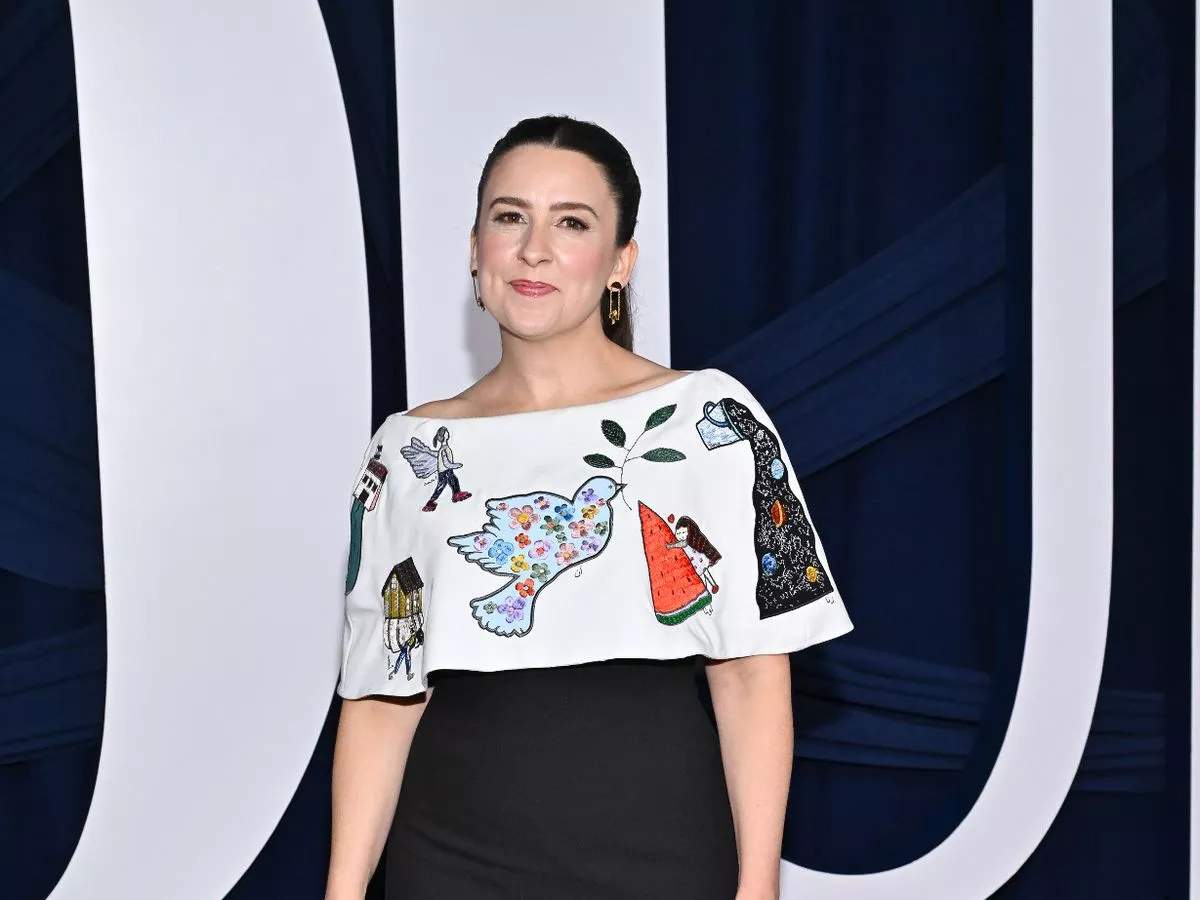Copyright scotsman

Bestselling author, cook, social media star and cultural ambassador Coinneach MacLeod, the Hebridean Baker, has packed up his yellow wellies, kilts and Fair Isle jumpers and hit the road for his first TV series. The four-part culinary travel series, to be shown on BBC Alba and iPlayer, Hebridean Baker: Nordic Islands sees MacLeod leave his Lewis home to film on location across four fascinating Nordic islands - Lofoten, the Faroe Islands, Gotland and Bornholm, exploring the food and traditions of fellow islanders. From fermented sheep’s head in the Faroes to sea urchin dessert and the OG of Danish pastries, MacLeod throws himself into discovering the variety of food on offer, and tries his hand at recreating recipes with locals in everything from home kitchens to Michelin-starred restaurants, all set against the stunning backdrops of islands that range from the North Sea to the Arctic to the Baltic. “I think a big part of the series is just for a feeling of being enveloped in a storyline of a place that you maybe aspire to go to. I think islanders will love the series because they'll get that sense of being proud of being from an island and seeing other islands - and maybe you'll just like it if you like men in kilts, looking wistful on mountains in jumpers and Wellington boots,” says MacLeod. “There are a lot of food shows and there are a lot of food travel shows but the USP of this one is islands and that's something I’ve always been passionate about. Not just being from an island, but islanders as well: we are a wee bit different. There were so many connections, because of the sea, the landscape, the people.” Directed by Graeme Hart - who has just made No Taste Like Home with celebrity chef Antoni Porowski of Queer Eye, which uses food to explore various celebrities' international roots, the series has a cinematic feel. “He was looking for making it big, and you see all these spectacular landscapes,” says MacLeod. “So there are lots of reasons to watch it and I'm really excited. It's going to be on BBC iPlayer so will be seen across the whole UK and all four episodes drop on the first day so you can binge. If you can’t wait, you can crack on with MacLeod’s attached recipe for Danish Brødtort, one of the recipes he discovered on his travels. It was MacLeod’s Aunt Bellag who taught him to bake and 51-year-old MacLeod believes if you want to understand a recipe, learn from those who have been making it for generations. “That way, you don’t just get delicious food, you get the stories, the recipes and the secrets,” he says. Read More - Interview with The Hebridean Baker as he goes viral MacLeod, who was born and raised in the village of Cromore on Lewis in the Outer Hebrides, is a TV regular these days on everything from ITV’s This Morning to BBC and CBS, sharing his traditional Scottish recipes, after he launched The Hebridean Baker on social media during COVID. From the kitchen of his island home, his unique blend of ingredients - warm personality, island way of life, cooking skills and stories - brought him a massive following and a star was born. Recently back from an American book tour, he will be touring Scotland with appearances including at A Right Highland Hoolie in Mallaig this weekend as well as tours in Australia and New Zealand and more in America lined up. He’s also on the road with his partner Peter MacQueen promoting MacQueen’s book Tails of Scotland, The Story of Scottish Dogs [Black & White]. With his cook books topping international charts and a popular podcast, it was only a matter of time before he was hosting his own show, exporting his Hebridean hygge and serving up the culture and cooking of a batch of Nordic Islands. In the series MacLeod discovers kindred spirits and community ties as well as similarities in ingredients dictated by the islands’ sometimes challenging environment, as well as fascinating differences in how they were used and the culture around them. While McLeod is familiar with the traditions of island life and grew up on a croft with a fisherman father and Harris Tweed weaving mother, he’s the first to admit that some of the filming presented a challenge. “When I found out about filming on the island of Lofoten in the Arctic Circle I thought, oh, they'll probably do that in the summer. But they said no, we're going in winter because their cod fishing season is only eight weeks in February and March and that’s what we want to film. Arctic cod is the islands’ white gold. “I can't sugar coat it. It was brutal. Minus 15 and snow, really challenging conditions My father was a fisherman but I'm quite lightweight when it comes to going down in fishing boats, so to meet these young men who are still doing this, for eight weeks, no day off, in difficult seas was quite something for me. Their passion for what they were doing, the quality they were bringing in, and doing it in a sustainable way was amazing.” “I’m a 1970s, 1980s kid, and we didn't have a fridge at home when I was young so there were barrels of salted meat and fish but in Lofoten they air dry the cod and walking through hundreds of meters of dry fish hanging above, like some kind of fish cathedral, was amazing.” “I think my biggest take from the series was that we had so many connections, but everything's shifted. We all eat mutton, we all eat fish, we do similar things with our bakes, but everything was slightly different.” Read More - The Road Dance premieres at the Edinburgh Film Festival So while MacLeod remembers going with his dad to drop off sheep’s heads with a neighbour who loved to turn them into soup, he’d never experienced a fermented sheep’s head dinner like that cooked up by fifth generation Faroese sheepfarmers Klaemint Mittun and his wife Berghild. “Yes, it's a wee bit of an acquired taste I guess, but it was just their absolute passion for it,” says MacLeod. With both Gaelic and English versions of the show being filmed for the BBC and the international market, and a need for close ups too, the fermented sheep’s head turned out to be the gift that just kept giving. “You've got to eat a fermented sheep’s head in Gaelic and then they cut and bring another one in for a close-up, then the third for the English version, then another for that close up. So everything I have to eat four of. When that is a delicious Danish pastry in Bornholm that is wonderful, but when it is fermented, sheep’ head… “At the end, because obviously I couldn't eat all of it, Berghild said, ‘are you not going to eat the eyes? Do you mind if I do?’ He smiles. “So there were lots of magical moments and the people are the highlight.” The repetition requirements for filming also meant MacLeod had several attempts at knitting with Susanna Holm, a 20th-generation Faroe Islander whose wool shop showcases traditional Faroese knitting presented in a modern way. “Susanna was a superstar,” says MacLeod. “When I was doing it I thought I was going really fast and then I watched the show and asked if they had put it in slow motion. “I loved that I was learning new skills, even learning how to make a Danish pastry from a Danish baker. It's an absolute dream to go through the full process with somebody who's so ingrained in that lifestyle. I did come back feeling more fulfilled and thinking ‘what’s my next adventure?’ I doubt it’ll be a knitting book though…” Familiar to MacLeod was also an islanders reticence to trumpet their achievements. “The wonderful Kirsty Wark was my first ever guest on my podcast, Scottish Island Adventures and said the skill as an interviewer is not when the person's amazing and tells great stories, it's when you have to get the best out of maybe somebody who's not used to talking and there is a humbleness to a lot of the island folk. They don't want to be too showy. We did everything from home bakers in wee kitchens all the way to Michelin- starred chefs and people who have created amazing businesses and my job was to make them feel excited and proud to showcase that.” Read More - Interview with Kirsty Wark “I think people will see the landscapes and think I want to see that, or see the food and want to try it, think I'm going to see Sebastian at that Michelin restaurant in the Faroe Islands and try sea urchin dessert,” he says referencing Raest, run by Mexican chef Sebastian Jimenez Garcia, which is redefining Faroese cuisine by mixing the traditional and modern. “That sea urchin dessert was fascinating. You know when your mouth tingles. I can feel it again just now. I want people to go and have all of these adventures and experiences. The islands are not so far away. The Faroes is only an hour flight from Edinburgh. And there are so many connections. When I went to the Faroes every person I met said they were watching An t-Eilean (The Island, BBC’s cross channel Gaelic TV show) because it was on Danish television, and they were loving it because it’s about another island.” Read More - interview with Sorcha Groundsell, star of An t-Eilean (The Island) In common with his fellow islanders, MacLeod understands what motivates the ebb and flow of populations to and from the islands, and how home exerts a longing among those who have left. “A lot of people have to leave and come back or want to come back and every single person I met on one of the islands who had left had this draw back which I felt as well when I left the island too. Most islanders spend the first 18 years of their life desperate to leave because they always think the grass is always greener, then they spend the rest of their life desperate to get back.” On Lofoten, a group of islands off the Norwegian coast in the Arctic Circle, MacLeod meets Angelita Eriksen of Lofoten Seaweed, the daughter of a fisherman who left but returned with a mission to bring seaweed back into the modern kitchen through a range of flavourings and products. “I realised what I wanted is actually at home,” she says. Similarly Jan Petersen, from a Faroese fishing family, returned from university in Denmark to set up a business making fish sausages, experimenting with paprika, curry, langoustine and seaweed flavourings. “Folk from Bornholm are going to Stockholm or people from Lofoten are going to Oslo and some take a lot of learnings back and that's really what I feel I've done as well. I've taken the best of what I've learned from away and brought it home,” says MacLeod. With a base in Lewis, MacLeod is currently building a house and agrotourism venture to upgrade the hut he shares near Oban with his partner TV presenter and cameraman Peter MacQueen. There, along with dogs Flòraidh the Westie and Peigi the Dandie Dinmont [whose arrival was recorded in MacQueen’s 2024 BBC ALBA’s six-part series, Cù Leis Thu? A Puppy for Pàdruig], their animals include Scottish breed sheep and cattle. “Next summer we're opening our farm as an agritourism farm for people to visit. The bathrooms are going in and the kitchen. I'm filming a Nigella Lawson-style Christmas show with recipes for BBC Alba, a real kitchen show, so that’s not far off…” he says nervously. “I don't know how I will be as the Hebridean Nigella, but I will try my best.” “At the farm we’ve got two polycrubs [Shetland polytunnels], and are going to show people how to grow vegetables and then they can come back to my house for supper clubs, whisky tasting, afternoon teas. “Peter is absolutely embracing the farming life already. We've got five Highland cows and some Castlemilk Moorit sheep and we’re going to focus on growing courgettes. Everything we're trying to do, through food, our adventures, our breeds, our vegetables, it's going to be rare Scottish breeds. We just started a little orchard of Scottish apple trees, for instance, and Our Dandie Dinmont, I'd never heard of a Dandie Dinmonts until now - they’re quite a rare breed. So it’s all things people might not have heard of but are part of our heritage.” Preserving tradition, mixing it up with modern and serving it up in exciting new ways is what excites MacLeod. “In Bornholm I met Louise who had a bakery and we went to her farm and collected elderflower and strawberries and she made this Danish pastry with strawberries and blue cheese with this elderflower syrup, mixing up savoury and sweet. It was spectacular. I think I am quite traditional in my flavor combination because I use a lot of old recipes but I've started to challenge myself by using things in that different way. “To be fair, I haven't done much fermenting of sheep's heads since I got back. But there’s time…” Hebridean Baker: Nordic Islands, Tuesdays at 9pm from Thursday 13 November on BBC ALBA and iPlayer. Brødtort Serves six Sonderjylland in southern Denmark is famous for its Sønderjysk Kaffebord – a long table topped with everything from sponge cakes, pastries and buns to layer cakes, biscuits and tarts. No Sønderjysk Kaffebord would be complete without Brødtort. A dense, sour, nutty rye cake sweetened with a filling of cream and jam. For your guests who do not like sweet sponges, they will find this a moreish treat! Ingredients For the cake 150g (5oz) rye bread (even better if it’s stale) 150g (5oz) hazelnuts or Brazil nuts 1 teaspoon baking powder 3 tablespoons cocoa powder 6 eggs 200g (7oz) soft dark brown sugar For the filling and topping 200ml (¾ cup + 1 tablespoon) double cream 100g (3½oz) blackcurrant jam 50g (1¾oz) dark chocolate Method 1. First, let’s make the cake. Preheat the oven to 200°C fan (425°F). Butter and line two 20cm (8”) tins. 2. Blitz the rye bread and the nuts in a food processor to create breadcrumbs. Mix these together with the cocoa powder and baking powder. 3. Separate your eggs. Whisk the egg yolks and sugar together until light and fluffy. Then fold your dry ingredients into the egg yolk mixture. Whisk the egg whites into stiff peaks, then fold gently into the batter. 4. Spoon into the prepared tins and bake for 12 minutes or until a skewer comes out clean. Remove from the oven and leave to cool in the tin for 10 minutes before turning out onto a wire rack to cool completely. 5. Now make the filling and topping: whip the cream until it holds its shape but isn’t stiff and spread half of it on the cake, then top with the blackcurrant jam. Place the second cake gently on top and spread this with the remaining cream. 6. Hold your chocolate bar with one hand and carefully scrape with a knife to create shavings. 7. Scatter the chocolate on top of the cake and serve.



